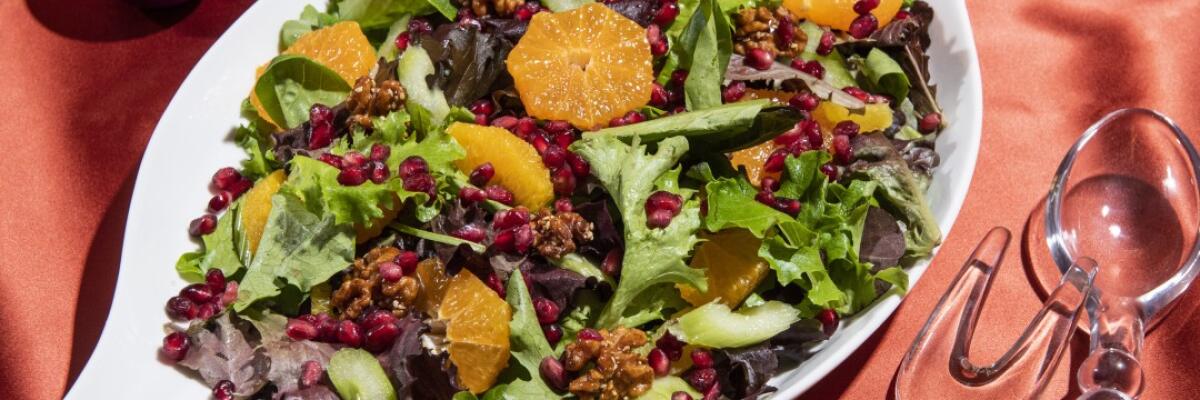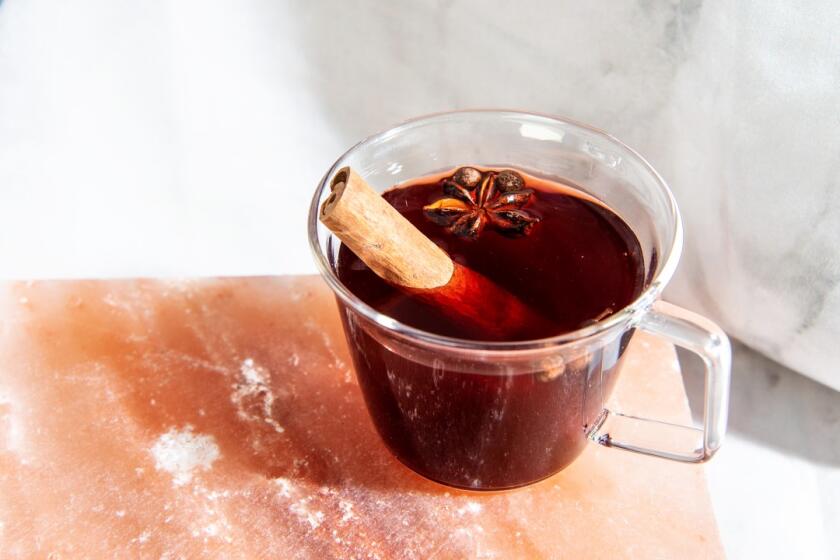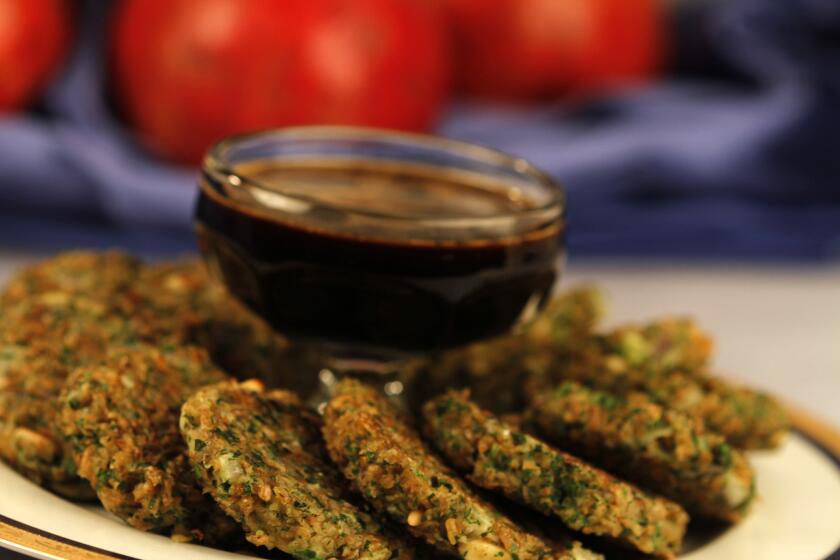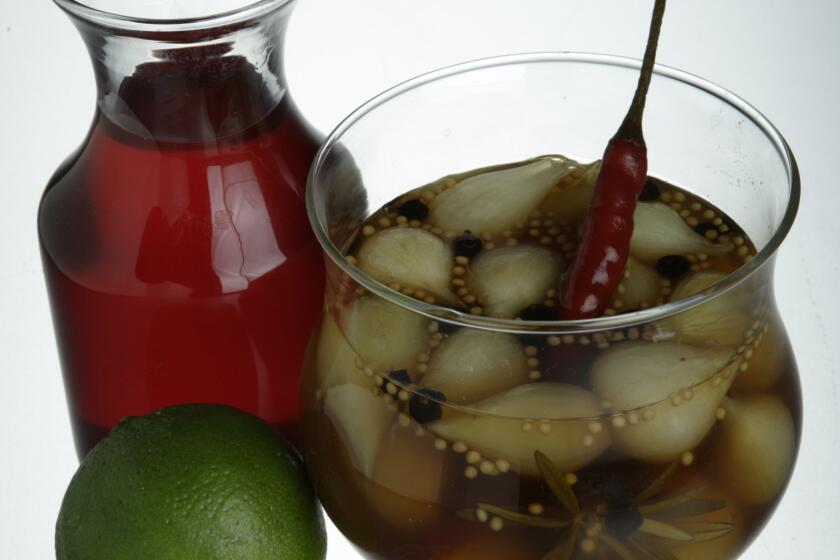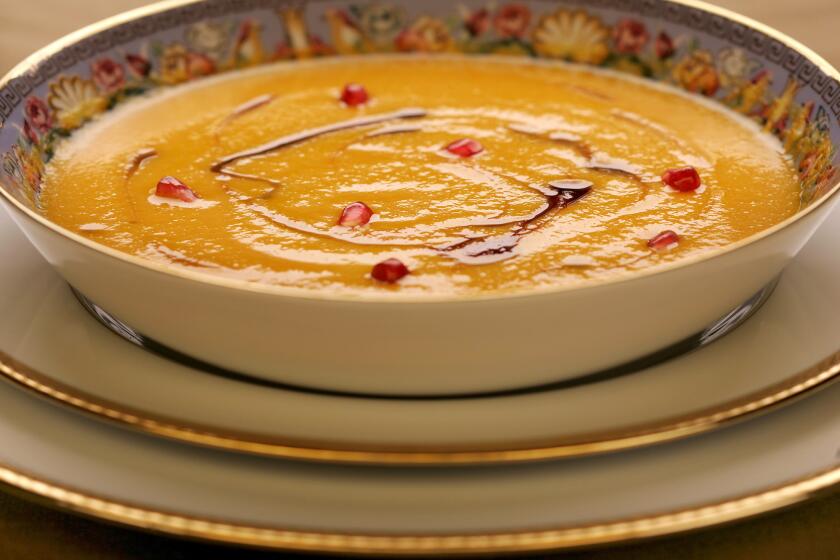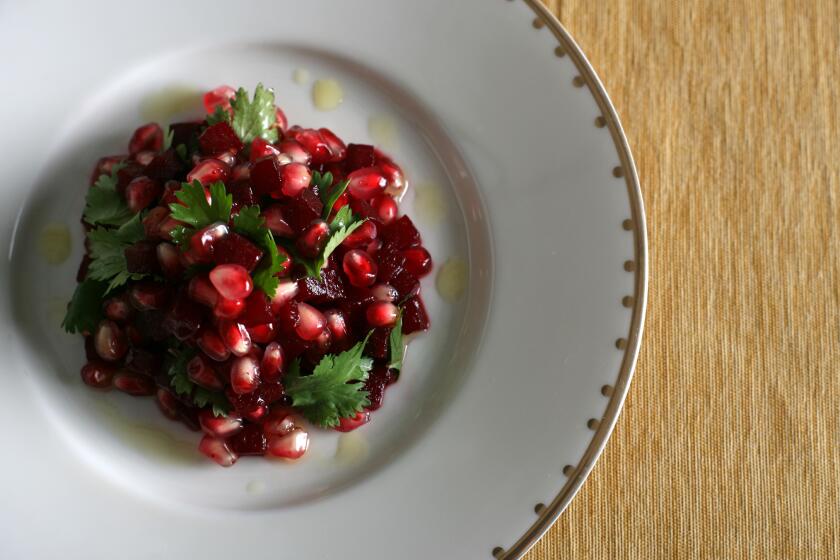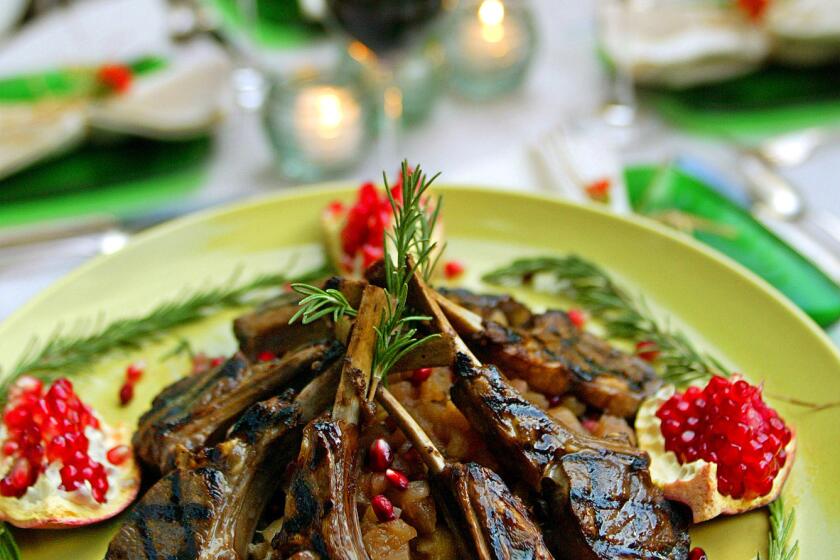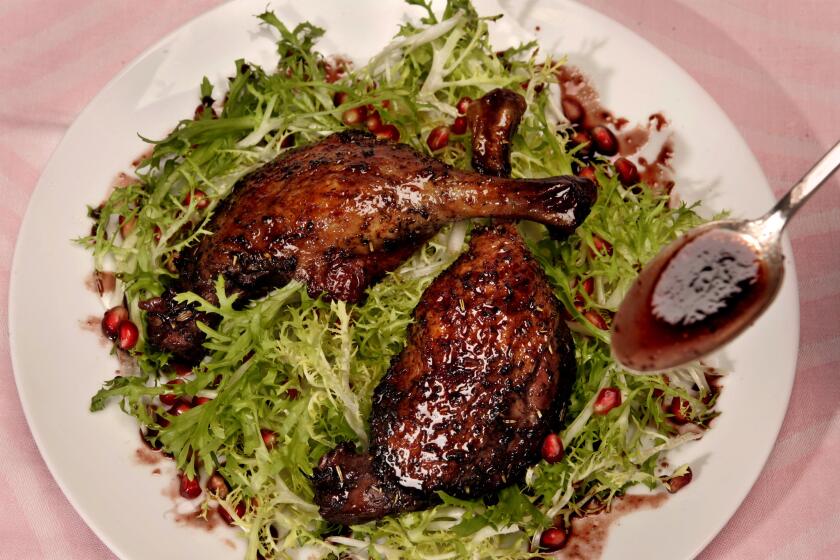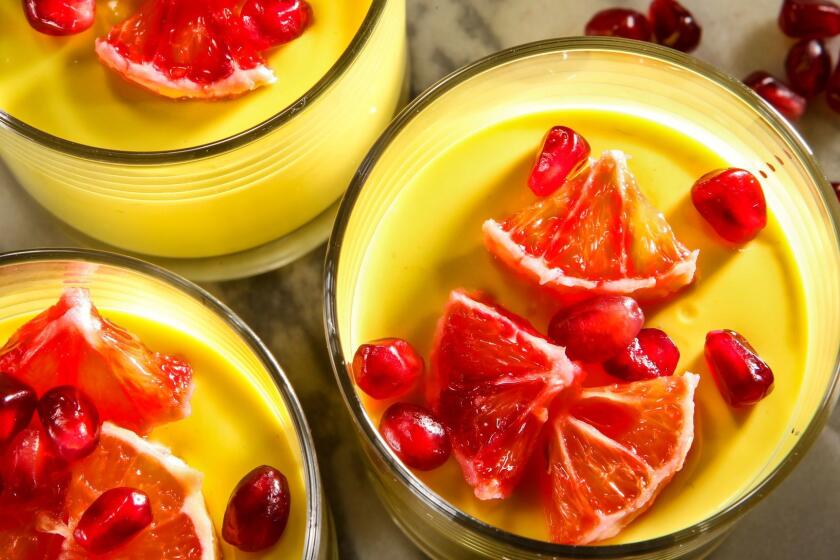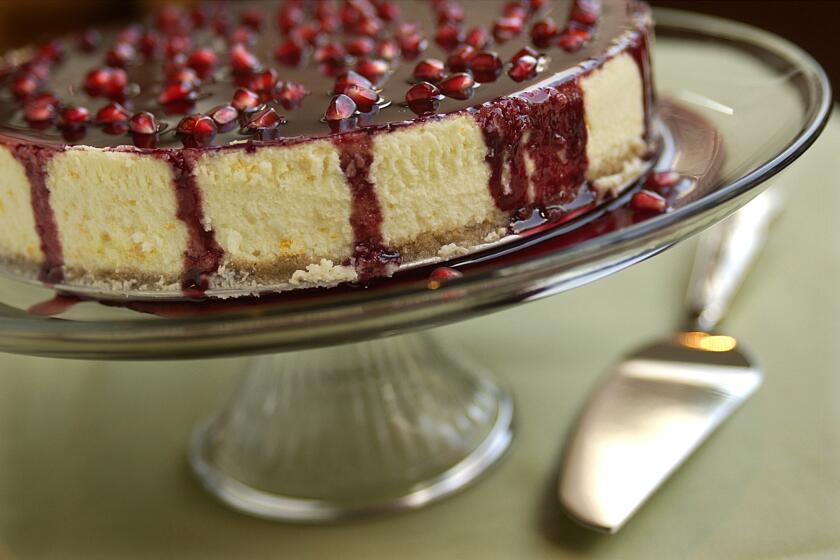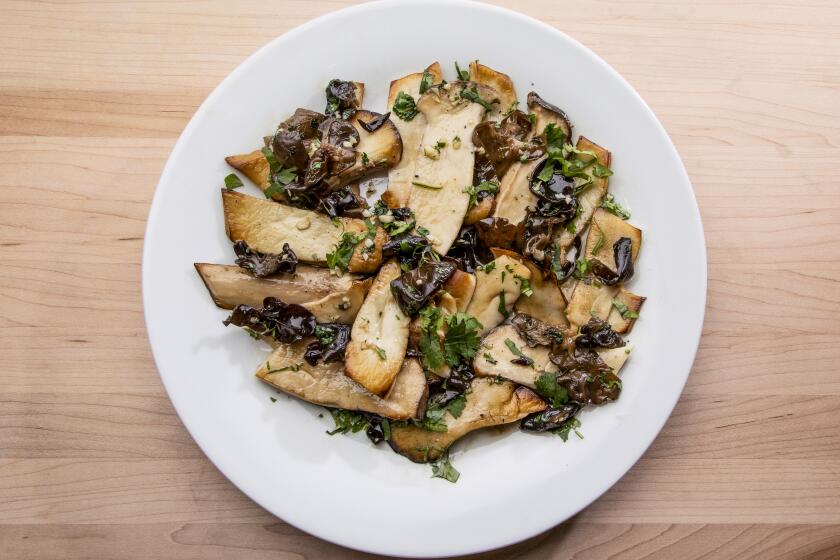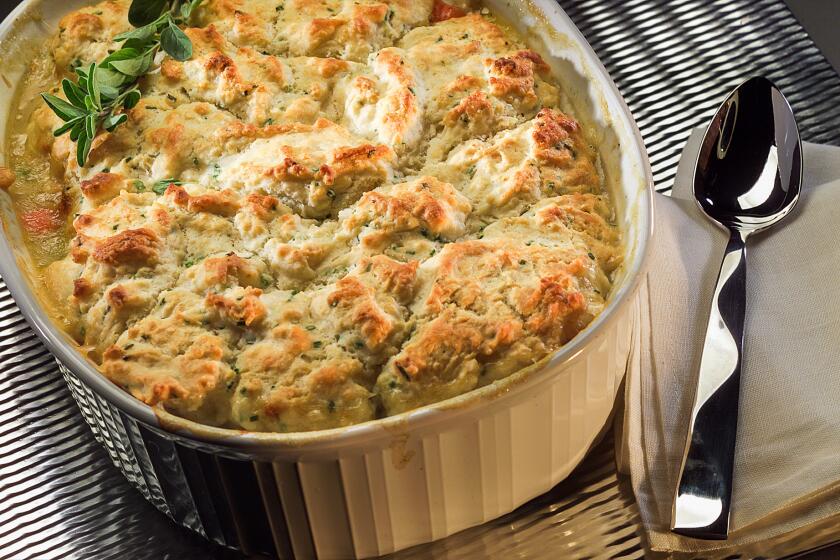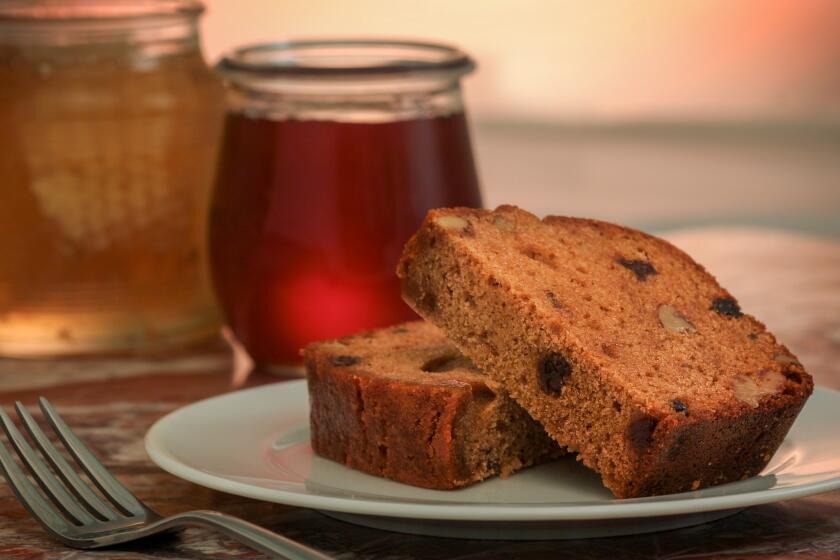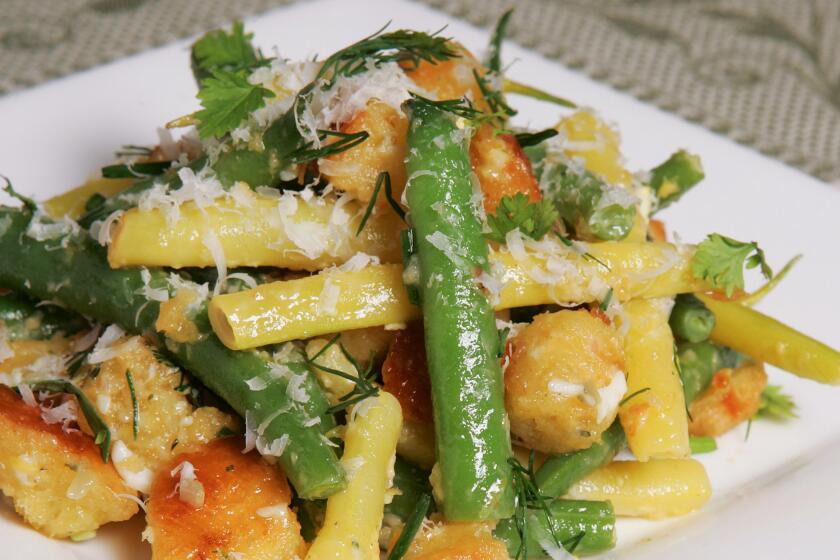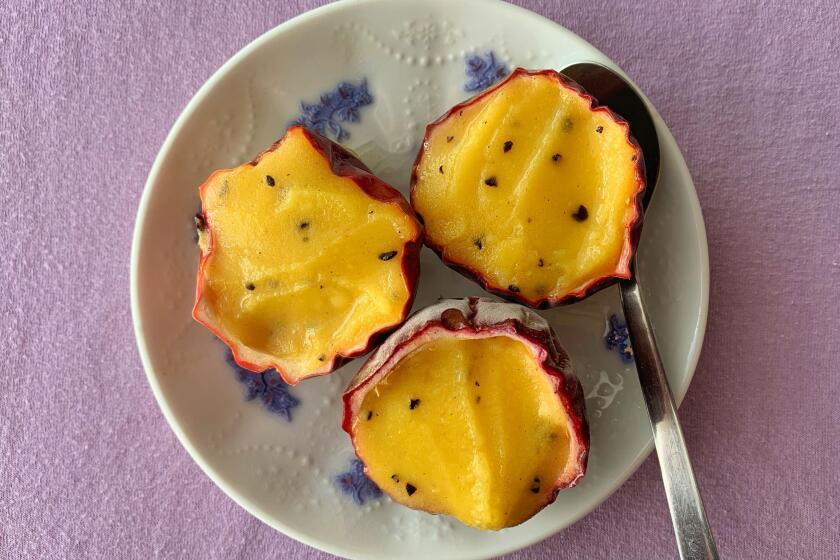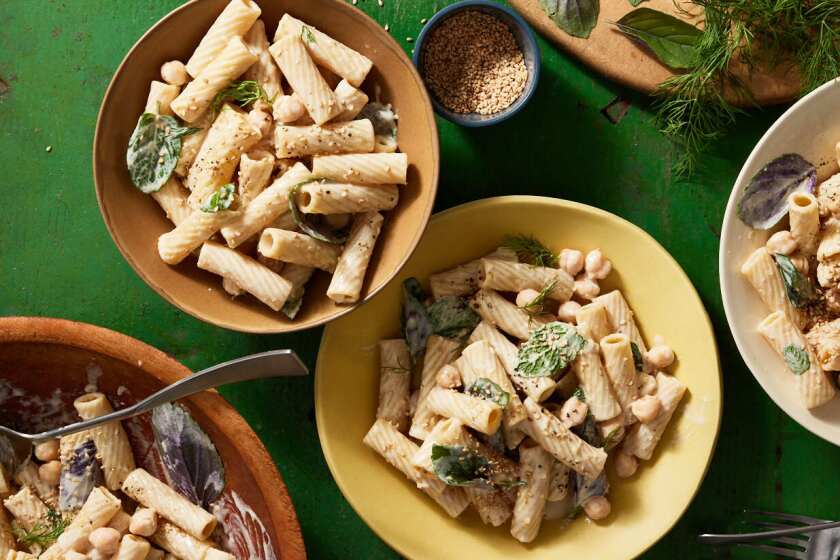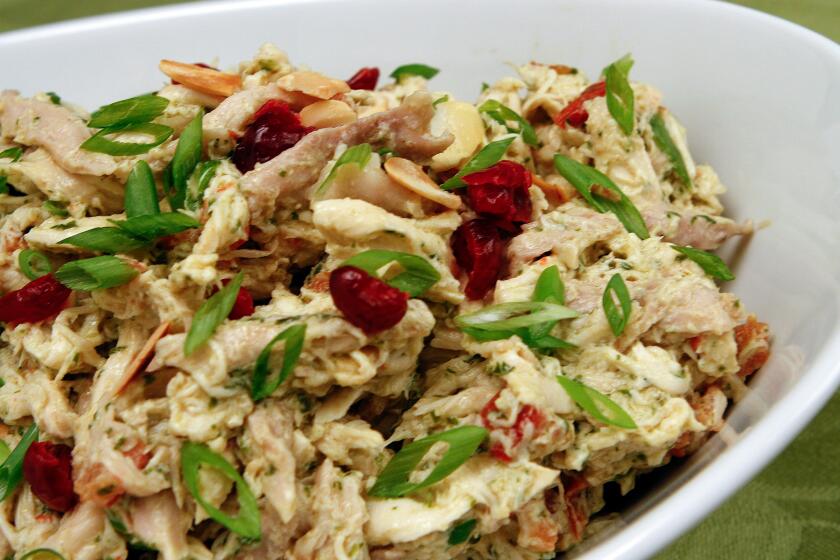Julie Giuffrida is the former Test Kitchen coordinator for the Los Angeles Times.
Pomegranates make for dazzling dishes
The first time I met a pomegranate was during my junior year of college while studying abroad in Jerusalem. My then (unbeknownst to me at the time) future Israeli mother-in-law showed me how to score the leathery skin and then immerse the whole fruit in water, pull it apart and rap on the skin to release the ruby red arils inside. They sank in the water and the pith and skin floated to the surface. She was intent that I grasp this vital skill of “peeling” a pomegranate without it squirting and staining your clothes.
I had seen pomegranates in paintings. I had read of them in Greek mythology and learned that they were symbolic of abundance and prosperity in many civilizations. I had even heard that some scholars believe it was a pomegranate that Adam and Eve ate in the Garden of Eden that fateful day (its botanical name, punica granatum, translates to “apple with many seeds”). Still, I had never seen or eaten the actual fruit. I was taken with the intense red of it and curious about all of those little bits and how to use them.
Some 35 years and many pomegranates later, I have learned a thing or two. No longer a rarity, stunning in color and sweet-tart flavor, pomegranates have become trendy and are called a “superfood,” touted as being nutrient-dense, rich in flavonoids and antioxidants and offering many health benefits. Pomegranates are mostly consumed as juice, and often the juice is used to create gorgeous and delicious dishes of all kinds.
Grenadine, used in many cocktails, is made from pomegranate juice (since this is the year of culinary do-it-yourself, try making your own). Dips and sauces can be made from the juice as is or with pomegranate molasses, a reduced, concentrated form of the juice, viscous and gooey and full of pomegranate-ness. Use it to braise duck or as a glaze for lamb chops. Drizzle it over a cheesecake for a dramatic, dazzling presentation. The arils are great eaten out of hand or sprinkled in salad and soup, where they add brilliant color, texture and bursts of flavor.
While not a holiday food, per se, the pomegranate is a fall and early winter fruit here in Southern California. It is an easy, vibrant way to dress up almost any kind of dish. Here are some favorite recipes from our archives.
Mulled Pomegranate Juice
Time 10 minutes
Yields Makes 1 drink
Bulgur latkes with pomegranate sauce
Time 45 minutes
Yields Serves 6 to 8
Grenadine
Time 15 minutes
Yields Makes 1 1/2 cups
Carrot and pomegranate soup
Time 1 hour 45 minutes
Yields Serves 4 to 6
Pomegranate and Citrus Salad
Time 15 minutes
Yields Serves 12
Beet and pomegranate salad
Time 1 hour 20 minutes
Yields Serves 6
Pomegranate-glazed lamb chops with rosemary applesauce
Time 45 minutes
Yields Serves 8 to 10
Pomegranate-braised duck legs
Time 1 hour 35 minutes
Yields Serves 2 to 4
Turmeric panna cotta with pomegranate and orange
Time 45 minutes
Yields Serves 4
Pomegranate-glazed orange cheesecake
Time 1 hour 30 minutes
Yields Serves 10-12

